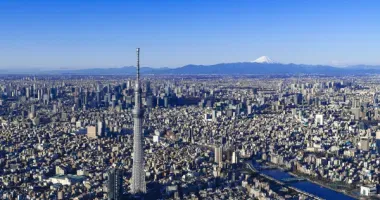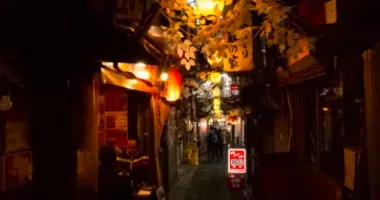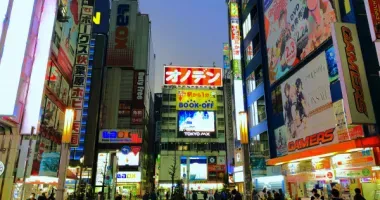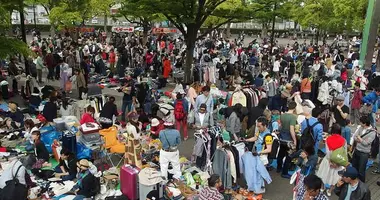Ginza Shopping: A Guide to Tokyo's Luxury Retail Paradise
Welcome to Ginza, Tokyo's most prestigious shopping district and a mecca for luxury retail enthusiasts. Steeped in history and brimming with elegance, Ginza offers an unparalleled shopping experience that seamlessly blends tradition with modernity. From world-renowned department stores to exclusive boutiques, this guide will take you on a journey through Ginza's iconic shopping landscape. Discover the district's rich cultural heritage, indulge in gourmet delights, and immerse yourself in the vibrant atmosphere that makes Ginza a must-visit destination for discerning shoppers and curious travelers alike.
Understanding Ginza's rich history and modern transformation
Ginza's fascinating history dates back to the Edo period when it served as the site of a silver coin mint. The name "Ginza" itself means "silver mint" in Japanese, reflecting its origins. Following the Great Kanto Earthquake of 1923, Ginza underwent a significant transformation, emerging as an upscale shopping district that would come to define luxury retail in Tokyo.
In the early 1900s, Ginza became synonymous with elegance and Western influence. The district saw the establishment of grand department stores like Mitsukoshi and Matsuya, which set the standard for high-end shopping experiences. These iconic establishments not only offered luxury goods but also introduced innovative concepts such as rooftop gardens and art exhibitions, elevating the shopping experience to new heights.
Today, Ginza stands as a testament to Japan's economic prosperity and cultural sophistication. The district's wide, tree-lined streets are home to flagship stores of international luxury brands, alongside venerable Japanese retailers. The harmonious blend of traditional architecture, like the iconic Wako building with its clock tower, and ultra-modern structures, such as Ginza Six, reflects Ginza's ability to honor its past while embracing the future.
One of Ginza's most cherished traditions is the "hokōsha tengoku" or "pedestrian paradise" that takes place on weekends. From noon until the early evening, the main Chuo-dori street is closed to vehicular traffic, allowing shoppers and visitors to stroll freely, creating a unique and relaxed atmosphere that epitomizes the Ginza experience.

Ginza Six, Ginza's newest shopping sensation
Navigating Ginza's iconic department stores and luxury boutiques
Ginza's reputation as a shopping paradise is built on its impressive array of department stores and luxury boutiques. At the heart of this retail wonderland are the iconic department stores that have been drawing shoppers for generations.
Mitsukoshi Department Store, founded in 1673, stands as a symbol of Japanese retail excellence. With its grand facade and opulent interiors, Mitsukoshi offers an extensive range of luxury goods, from high-end fashion to exquisite homeware. The store's basement food hall, or "depachika," is a gourmet paradise, showcasing the finest Japanese and international delicacies.
Just across the street, the Wako Department Store occupies the iconic Ginza Wako building, recognizable by its famous clock tower. Specializing in luxury watches, jewelry, and accessories, Wako epitomizes the refined taste and attention to detail that Ginza is known for.
Matsuya Department Store, another Ginza stalwart, offers a more contemporary shopping experience. Its carefully curated selection of fashion, beauty products, and lifestyle goods caters to a discerning clientele looking for the latest trends alongside timeless classics.
For those seeking international luxury brands, Ginza's main streets are lined with flagship stores of renowned fashion houses. From Chanel and Louis Vuitton to Hermès and Gucci, these boutiques offer exclusive collections and personalized shopping experiences that go beyond the ordinary.
The newest addition to Ginza's retail landscape, Ginza Six, brings together over 240 stores under one roof. This modern complex houses a mix of luxury brands, contemporary labels, and artisanal Japanese crafts, offering a comprehensive shopping experience that reflects the evolving tastes of global consumers.

Wako Department Store, Ginza, Tokyo
Exploring unique shopping experiences in Ginza
Beyond the glitz of department stores and luxury boutiques, Ginza offers a plethora of unique shopping experiences that cater to diverse interests and passions. These hidden gems and specialized stores contribute to the district's charm and appeal to shoppers looking for something extraordinary.
For stationery enthusiasts, Itoya is a must-visit destination. This 12-story emporium is dedicated to all things paper and writing. From exquisite Japanese washi paper to high-end fountain pens, Itoya offers a sensory experience that celebrates the art of writing and creativity.
Art lovers will find solace in Ginza's numerous galleries and art supply stores. The Shiseido Gallery, one of Japan's oldest art spaces, regularly hosts exhibitions featuring contemporary artists. Meanwhile, specialized art supply stores like Pigment Tokyo offer an extensive range of traditional and modern art materials, attracting both professional artists and hobbyists.
For those interested in Japanese craftsmanship, Ginza is home to several stores specializing in traditional arts. Takumi, for instance, showcases a wide array of Japanese crafts, from ceramics to textiles, offering visitors the opportunity to purchase authentic pieces directly from artisans.
Tech enthusiasts shouldn't miss the Apple Store Ginza, which was the first Apple Store to open in Japan. Its striking architectural design and cutting-edge product displays make it a destination in its own right.
Families with children will delight in a visit to the Hakuhinkan Toy Park. This multi-story toy store offers an vast selection of toys, games, and collectibles, ranging from traditional Japanese playthings to the latest international trends.
Indulging in Ginza's gourmet food scene
Ginza's culinary landscape is as diverse and refined as its shopping offerings, making it a paradise for food enthusiasts. From traditional Japanese cuisine to international gourmet experiences, the district caters to all palates and preferences.
For an authentic taste of Japan, visit one of Ginza's renowned sushi restaurants. Establishments like Sushi Aoki and Kyubey offer exquisite omakase experiences, where master chefs showcase their skills using the freshest ingredients. These restaurants often require reservations well in advance, a testament to their popularity and quality.
Ginza is also home to several Michelin-starred restaurants, offering a range of cuisines. L'Effervescence, for instance, blends French culinary techniques with Japanese ingredients, creating innovative dishes that reflect the district's cosmopolitan nature.
For a more casual dining experience, explore the food halls located in the basements of Ginza's department stores. These "depachikas" offer a dizzying array of gourmet delicacies, from beautifully crafted bento boxes to artisanal sweets. It's the perfect place to sample a variety of Japanese specialties or pick up a picnic to enjoy in nearby Hibiya Park.
Coffee lovers should not miss the opportunity to visit some of Ginza's historic cafes. Café Paulista, established in 1911, offers a glimpse into the district's past with its classic atmosphere and carefully crafted coffee. For a more modern experience, the Starbucks Reserve Roastery Tokyo provides an immersive coffee journey in a stunning architectural setting.
To round off your culinary adventure, indulge in some of Ginza's famous sweets. The Shiseido Parlour, known for its Western-style confectioneries with a Japanese twist, has been a Ginza institution since 1902. For a taste of traditional Japanese sweets, visit Ginza Akebono, where you can savor exquisite wagashi in a serene setting.

Ginza by night
Discovering art and culture in Ginza's galleries and theaters
While Ginza is primarily known for its shopping, the district also boasts a rich cultural scene that adds depth to the visitor experience. Art galleries, theaters, and cultural institutions contribute to Ginza's sophisticated atmosphere, offering visitors a chance to engage with Japanese art and performance.
The heart of Ginza's cultural offerings is the Kabukiza Theatre, the premier venue for kabuki performances in Tokyo. This magnificent building, with its distinctive architecture, hosts daily performances of this traditional Japanese theater art. Visitors can enjoy full performances or opt for single-act tickets, making it accessible even for those with limited time.
Art enthusiasts will find plenty to explore in Ginza's numerous galleries. The Shiseido Gallery, one of Japan's oldest art spaces, regularly hosts exhibitions of contemporary art by both Japanese and international artists. The Ginza Graphic Gallery, focused on graphic design and visual communication, showcases innovative work in this field.
For a unique cultural experience, visit the Hakuhinkan Theater, located within the Hakuhinkan Toy Park. This intimate venue hosts a variety of performances, including traditional Japanese puppet theater (bunraku) and magic shows, offering entertainment for all ages.
Music lovers should not miss the Yamaha Ginza Store, which goes beyond being a mere instrument shop. Its in-house concert hall regularly hosts performances, ranging from classical recitals to jazz concerts, providing a perfect blend of retail and cultural experiences.
To delve deeper into Japanese culture, consider visiting one of Ginza's cultural experience venues. Places like the Namiki Yabusoba restaurant offer workshops on traditional arts such as tea ceremony or flower arrangement, allowing visitors to gain hands-on experience with Japanese cultural practices.
Making the most of Ginza's pedestrian paradise weekends
One of Ginza's most charming features is its transformation into a "pedestrian paradise" (hokōsha tengoku) every weekend and on national holidays. During these times, the main Chuo-dori street is closed to vehicular traffic, creating a unique and relaxed atmosphere that allows visitors to fully appreciate the district's beauty and offerings.
The pedestrian zone typically operates from noon until 5 pm (October to March) or 6 pm (April to September). This car-free environment encourages a leisurely pace, perfect for window shopping, people-watching, and soaking in the vibrant atmosphere of one of Tokyo's most fashionable districts.
Take advantage of this time to explore Ginza's architectural wonders without the distraction of traffic. The iconic Wako building with its clock tower, the sleek Ginza Six complex, and the numerous flagship stores of international brands showcase a fascinating mix of architectural styles, from classic to ultra-modern.
Many shops and department stores offer special promotions or events during these pedestrian-only hours. Keep an eye out for pop-up displays, street performances, or seasonal decorations that add to the festive atmosphere. It's not uncommon to see fashion shoots or TV crews taking advantage of the picturesque setting.
For a truly local experience, join the throngs of Tokyoites enjoying a leisurely stroll or catching up with friends at one of the many outdoor cafes that set up tables on the street. This is an excellent opportunity to people-watch and observe the latest fashion trends in one of the world's style capitals.
Don't forget to explore the side streets branching off from Chuo-dori. These quieter alleys often hide charming boutiques, artisanal shops, and cozy cafes that offer a more intimate shopping and dining experience away from the main crowds.

Pedestrian Chuo-Dori, Ginza, Tokyo on Sundays
Practical tips for shopping in Ginza
To make the most of your shopping experience in Ginza, keep these practical tips in mind:
1. Best time to visit: While Ginza is bustling throughout the week, weekends offer a unique atmosphere with the pedestrian paradise. However, if you prefer a quieter shopping experience, consider visiting on weekdays.
2. Tax-free shopping: Many stores in Ginza offer tax-free shopping for foreign visitors. Bring your passport to take advantage of this opportunity, but be aware of the minimum purchase requirements.
3. Opening hours: Most shops in Ginza open around 10 or 11 am and close between 8 and 9 pm. Department stores often have slightly longer hours, while smaller boutiques might close earlier.
4. Dress code: While there's no strict dress code, Ginza has a reputation for elegance. Dressing smartly will help you blend in and feel comfortable in high-end stores.
5. Language: Many stores in Ginza have staff who speak some English, especially in luxury boutiques and department stores. However, it's helpful to learn a few basic Japanese phrases for shopping.
6. Payment methods: While cash is still king in many parts of Japan, most stores in Ginza accept major credit cards. Some shops also accept electronic payments like Apple Pay or Google Pay.
7. Dining reservations: For popular restaurants, especially high-end sushi places, make reservations well in advance. Your hotel concierge can often assist with this.
8. Explore beyond the main street: While Chuo-dori is the heart of Ginza, don't hesitate to explore the side streets. You'll often find unique boutiques and less crowded dining options.
9. Take breaks: Ginza can be overwhelming. Take advantage of the many cafes or visit nearby Hibiya Park for a refreshing break from shopping.
10. Transportation: Ginza is well-served by public transportation. The Ginza, Hibiya, and Marunouchi subway lines all stop at Ginza Station, making it easily accessible from other parts of Tokyo.
By keeping these tips in mind, you'll be well-prepared to navigate Ginza's luxury shopping scene and make the most of your visit to this iconic Tokyo district.




























